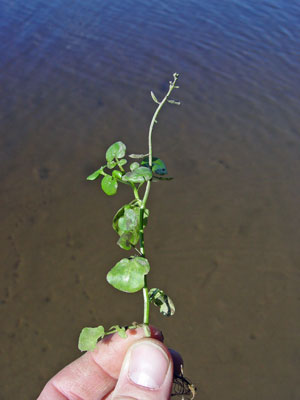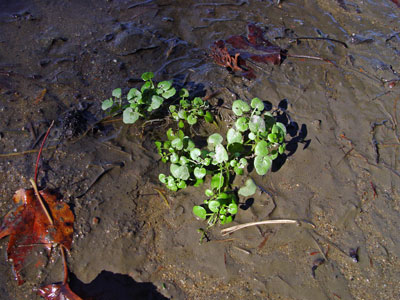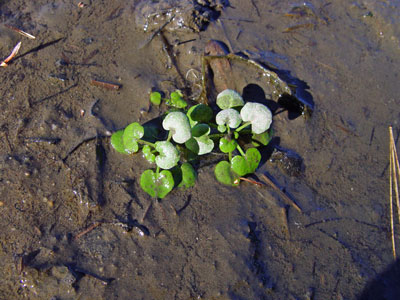DACF Home → Bureaus & Programs → Maine Natural Areas Program → Communities, Plants, and Animals → Rare Plants → Cardamine longii

Cardamine longii Fern.
Long's Bitter-cress
- State Rank: S2
- Global Rank: G3?
- State Status: Threatened
Habitat: Tidal estuary. [Tidal wetland (non-forested, wetland)]
Range: Local, along the coastal plain, from Maine to Virginia.

Aids to Identification: Saltmarsh bitter-cress is a weak-stemmed herb growing from fibrous roots to a height of 10-30 cm. All the leaves grow on leaf-stalks, the flowers have no petals, and the fruits are divergent. This species is easily distinguished from the similar Alpine bitter-cress (C. bellidifolia) by the difference in habitat.
Ecological characteristics: In Maine this species typically grows on sandy muck and cobbles.

Phenology: Flowers June - September.
Family: Brassicaceae
Synonyms: None noted.
Known Distribution in Maine: This rare plant has been documented from a total of 8 towns in the following counties: Hancock, Lincoln, Sagadahoc.
Reason(s) for rarity: Scarce throughout its range.
Conservation considerations: Prevent degradation of marsh and estuary habitat from adjacent land uses.